Industrious Series: Chenn Zhou discusses how a parent-teacher conference redirected her career.
Industrial Efficiency & Decarbonization Office
July 23, 2024When an emergency parent-teacher conference is called, most students quake in fear. But when a teacher appeared at the home of 18-year-old Chenn Zhou, she called it one of the luckiest days of her life.
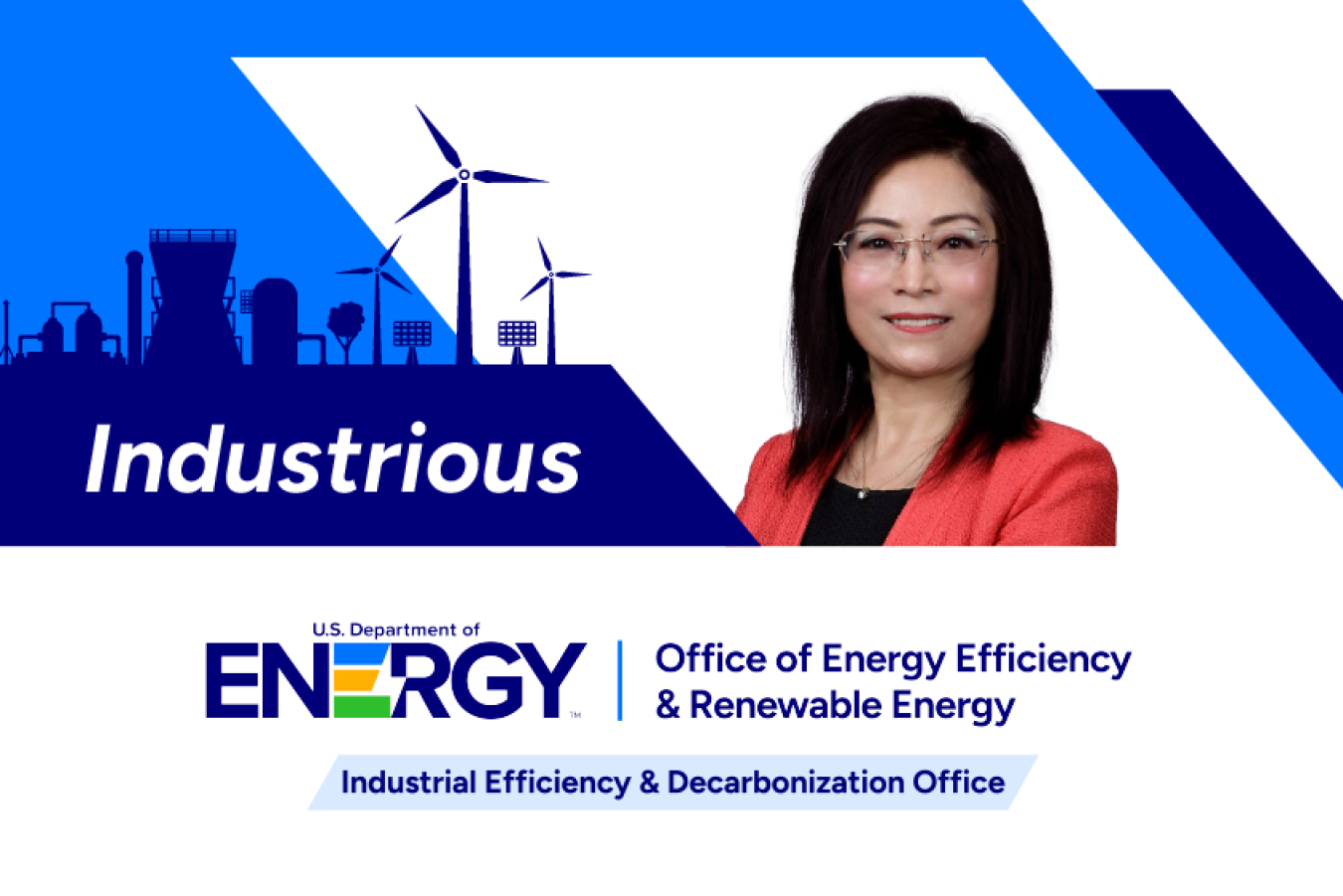
Zhou was a stellar student in grade school. She was often called to the front of the classroom to solve a math problem, and her essay on wanting to become a teacher was posted at the school as an exemplary writing sample.
After graduating from high school, Zhou was preparing for a liberal arts track in college when her high school teachers heard about her plan. They sent her homeroom teacher to make a surprise appearance at her house.
“That was a lucky day. My teacher told my parents, ‘She's wonderful in writing. However, the world is changing. We need good engineers and scientists who can make more impact.’ So, that day changed my whole life, and I never regretted making the switch to study science and engineering,” said Zhou.
Industrious
The Industrious series highlights outstanding individuals working with the Industrial Efficiency and Decarbonization Office to implement meaningful change in the industrial sector.
That switch took Zhou on a long and successful path as a mechanical engineer, distinguished professor, and founding director of the Purdue University Northwest Center for Innovation through Visualization and Simulation (CIVS) since 2009 and the nationwide Steel Manufacturing Simulation and Visualization Consortium (SMSVC) since 2016. She has conducted many projects funded by industries and federal agencies, such as the U.S. Department of Energy (DOE), in collaboration with more than 180 organizations.
In 2021, DOE’s Office of Energy Efficiency and Renewable Energy selected CIVS and SMSVC to develop a physics-based and data-driven next-generation integrated virtual blast furnace for real-time energy efficiency improvements in steel plants. Then, in 2023 and 2024, DOE’s Industrial Efficiency and Decarbonization Office (IEDO) funded CIVS and SMSVC to lead two large decarbonization projects respectively: (1) development and demonstration of an industrial hydrogen-fired steel reheating furnace and (2) technical development and industrial demonstration of net-zero carbon electric arc furnace steelmaking with alternative injection and stirring technologies. Zhou has not only been directing the CIVS and SMSVC to lead these multipartner projects, but she has also been teaching and mentoring the next generation of engineers, as well as cultivating future research leaders along the way.
In this Q&A interview, Zhou shares what excites her most about the integrated virtual blast furnace and why she’s not concerned about artificial intelligence (AI) replacing people on the path to industrial decarbonization.
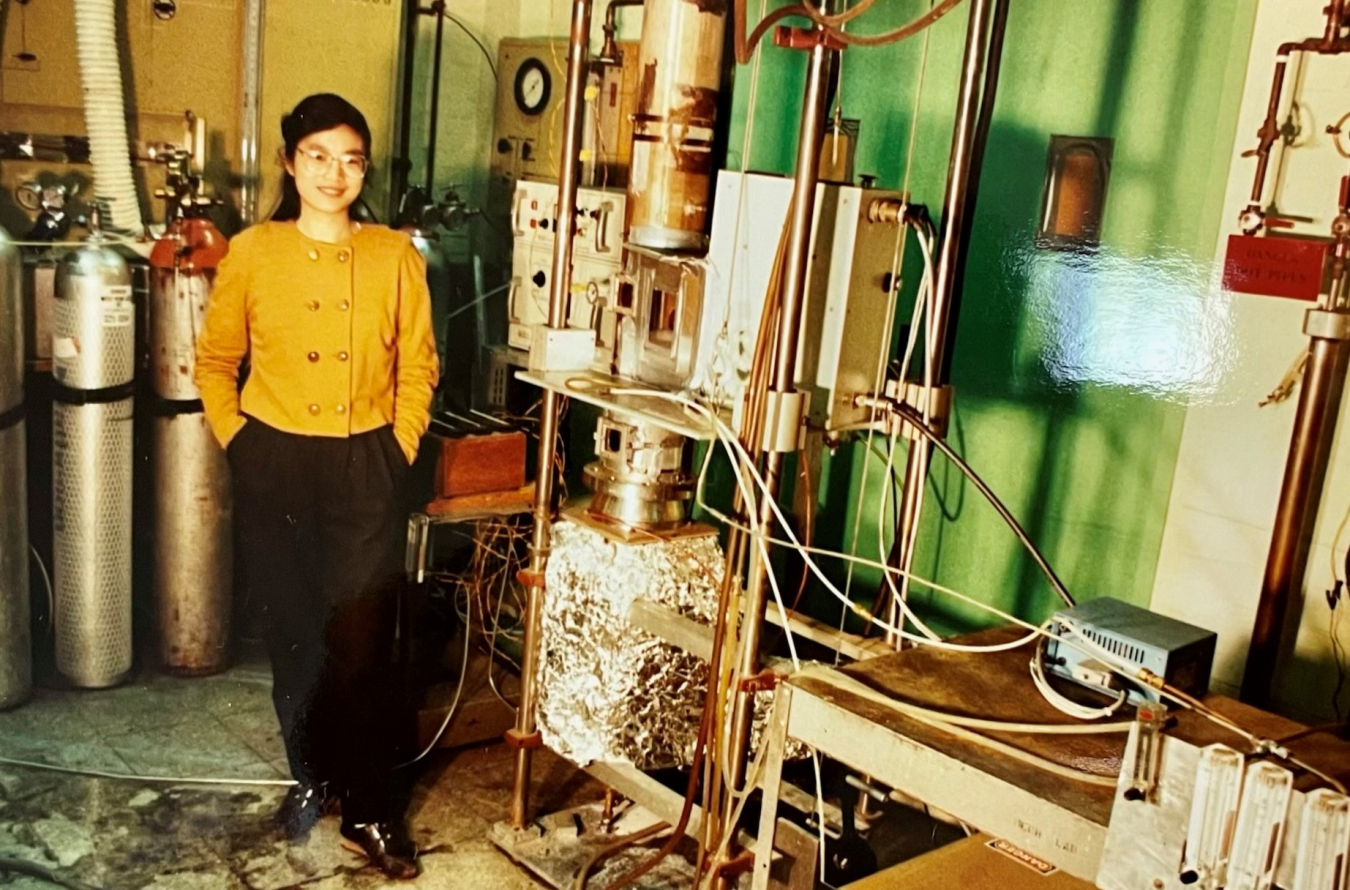
It’s clear you were a highly motivated and talented student. Did you encounter any obstacles as you moved from the academic to the professional world?
When I came to Carnegie Mellon for my Ph.D. in mechanical engineering in 1987, my number one obstacle was the English language. I could read and write but barely communicate verbally. And I was only one of two female Ph.D. students in the whole department. In 1991, I joined a small startup company, and I was the only female engineer. And then when I joined Purdue University Northwest (formerly Purdue University Calumet) faculty in 1994, I was the only woman among the engineering professors. There were times when I heard comments from people expressing disbelief that a woman could be a great engineer. Although it was unpleasant, it was never something I let affect me. What mattered most was the quality and impact of my work.
Tell me about the work you're doing now. What problems are you trying to solve? Why should people care?
At CIVS and SMSVC, we are trying to stay at the forefront of industrial decarbonization by using digital technologies to address energy and air pollution issues caused by industrial processes. For over 40 years, I’ve applied my training and experience in combustion and computational fluid dynamics (CFD) to these problems. When I was a Ph.D. student, one major focus of mine was developing a reduction technique for nitrogen oxides emissions (harmful pollutants that contribute to air quality problems such as smog, acid rain, and respiratory issues) using plasma for industry furnaces.
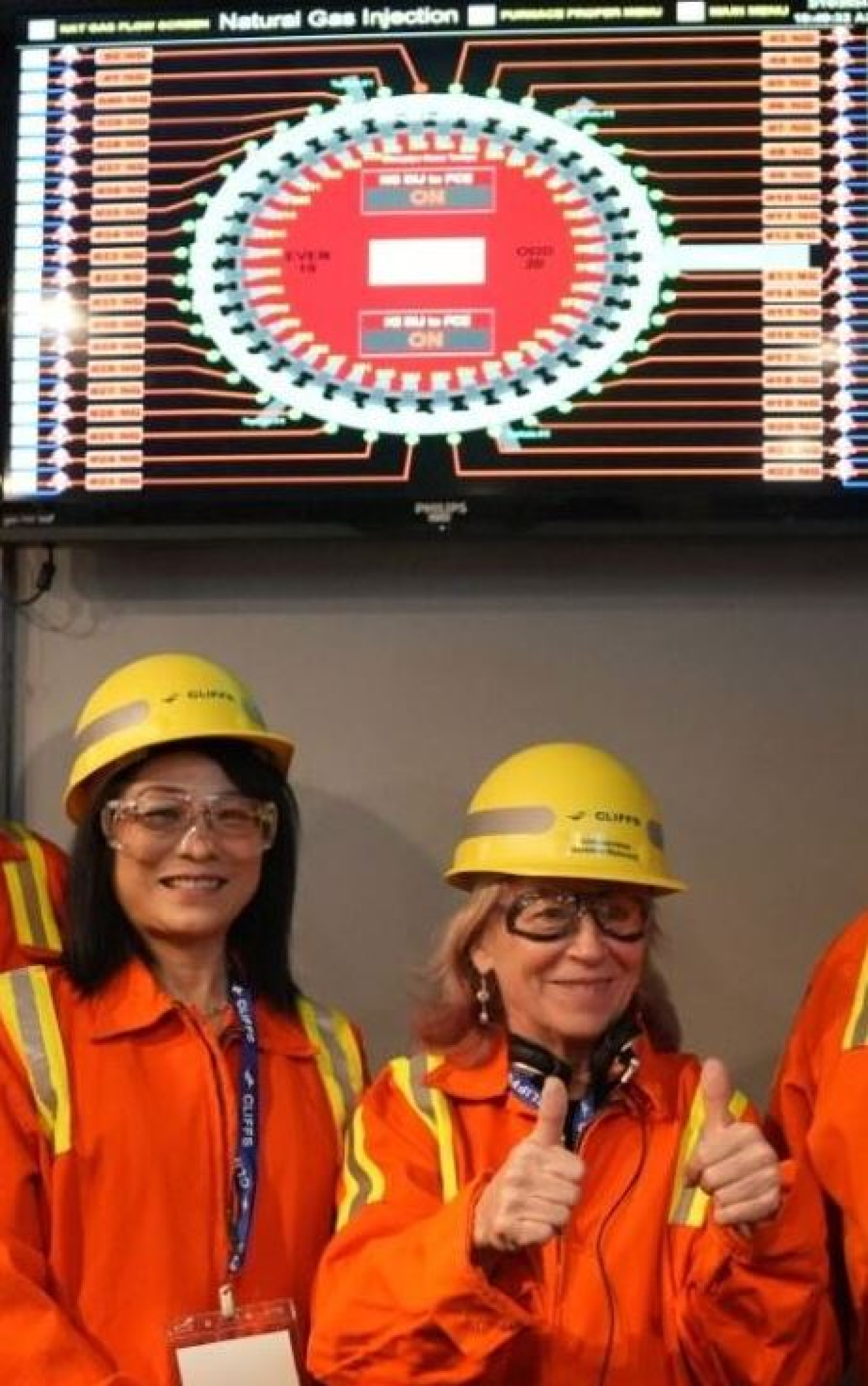
Now, after more than 30 years at Purdue University Northwest, my research focus has evolved to industrial digitalization and decarbonization to reduce carbon dioxide emissions, which are currently two of most important industry research areas worldwide. We integrate digital technologies—CFD models, augmented and virtual reality, visualization, AI and smart sensors—to provide physics-based and data-driven virtual process simulators of these industrial processes to help decision makers (who aren’t trained in CFD) understand what’s going on inside their plants in a timely and cost-effective fashion.
So how does understanding the physics inside a plant’s operation help decision makers?
Understanding distributions of velocity, temperature, and chemical entities inside a process helps decision makers identify the root cause of a problem, which helps them create more effective solutions for optimal plant operations.
For a local utility, we collaboratively solved a plant operation issue using CFD simulation and visualization within 2 months and saved them $1.9 million annually. The beauty is that the utility didn’t have to know CFD or be engineers to understand what’s going on inside their plants. They can see it in a virtual environment with their own eyes with our simulation and visualization tool.
![A person gesturing in front of a presentation screen with data visualizations]](/sites/default/files/styles/full_article_width/public/2024-07/iedo-industrious-chenn-zhou-h2rf.jpg?itok=yHrr6X3P)
We’re helping them make quick decisions with confidence. We have used CFD models to solve ironmaking blast furnace issues for more than 20 years, which has reduced plant costs and downtime significantly. And now, we are adding machine learning to develop reduced-order models, which can enable almost real-time decision making. This has been developed and implemented in our integrated virtual blast furnace project, which will serve as a framework for other large decarbonization projects, like a $7 million project for electric arc furnaces and a $10 million project for a reheating furnace for a hydrogen combustion demonstration.
What excites you most about your current work?
The reality is engineers are changing the world and making a direct impact on people. We develop technologies to empower people to make good decisions based on physics and data so they don’t have to rely on costly and dangerous trial and error. What excites me most is working closely with students, faculty, staff, and industry collaborators to solve real-world problems. These interactions create win-win partnerships that provide excellent economic and educational benefits for all involved. Our simulation and visualization capabilities are also helping to train a workforce for future industrial processes and keep people safe too—by providing safety and process training simulators that are authentic, immersive, interactive, and based on real phenomena and scenarios. For example, in collaboration with industry, we created a virtual fire extinguisher to train over 4,000 people at a plant, without putting them in danger. I’m so proud of that.
What do you think people often don’t know or get wrong about finding clean energy solutions for industry?
Ten years ago, I was at a steel industry forum in Europe, and someone suggested that, in the future, everything will rely on AI so we won’t need people who are experts in CFD. I disagreed, and I still do. AI will play a key role, but in my opinion, we can’t rely on just AI or just data to figure out solutions. You cannot leave the human factor and physics out. We still have to understand why something is operating improperly, and the “why” comes from understanding the physics behind the data. I spent about 20 years advocating for CFD applications and then another 10 years for CFD and visualization.

Now, I truly believe that the integration of digital technologies—including AI, CFD simulations, advanced visualization, high-performance computing, and smart sensors—will enable more powerful tools for providing clean energy solutions. So, we need a workforce for AI, as well as for multiphysics CFD modeling, simulation, and visualization, and I think DOE recognizes that people with these skills will always be a part of smart manufacturing.
What advice do you have for folks who want to pursue a career in engineering, clean energy, or industrial decarbonization?
I tell my students, “Enjoy what you’re doing. Passion creates energy, and energy is what keeps you moving forward, even when you face challenges.” Also, collaborations and innovation through integration of technologies are keys to success in clean energy and industrial decarbonization. Furthermore, having well-rounded soft skills, open-mindedness, and a sense of appreciation for your collaborators is the most effective and efficient way for staying at the forefront of technologies to enjoy your work and fully address the challenges of today and tomorrow.
Want to know more about industrial decarbonization? Subscribe to the IEDO newsletter to read other Industrious Q&A interviews, and learn all about the Industrial Heat Shot on our website.
Relevant News
-
 2024 was a critical year for DOE's Industrial Efficiency and Decarbonization Office (IEDO) as we continued to invest in transformational technologies and foster meaningful relationships to help U.S. industry thrive.
2024 was a critical year for DOE's Industrial Efficiency and Decarbonization Office (IEDO) as we continued to invest in transformational technologies and foster meaningful relationships to help U.S. industry thrive. -
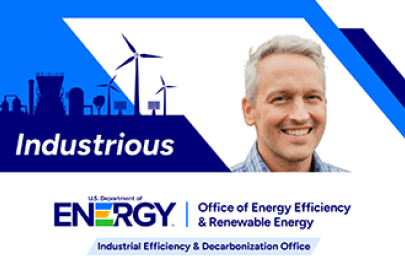 Industrious series: Meet Corey Tyree, who shares in Q&A interview how curiosity led him from a rural town into engineering.
Industrious series: Meet Corey Tyree, who shares in Q&A interview how curiosity led him from a rural town into engineering. -
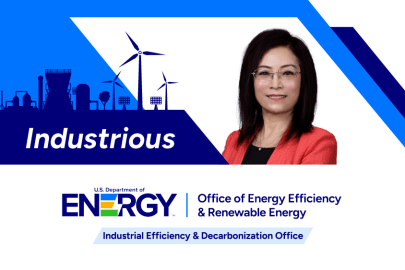 Industrious Series: Chenn Zhou discusses how a parent-teacher conference redirected her career.
Industrious Series: Chenn Zhou discusses how a parent-teacher conference redirected her career. -
 The chemicals industry, critical for the U.S. economy, heavily depends on fossil resources as a feedstock and for energy. Ambitious pathways support technology development and collaboration across the entire chemicals value chain.
The chemicals industry, critical for the U.S. economy, heavily depends on fossil resources as a feedstock and for energy. Ambitious pathways support technology development and collaboration across the entire chemicals value chain. -
 On the southern shore of Lake Michigan, a university and a steel plant are working on the same problem. Dr. Geri Richmond and Rep. Frank Mrvan paid both organizations a visit.
On the southern shore of Lake Michigan, a university and a steel plant are working on the same problem. Dr. Geri Richmond and Rep. Frank Mrvan paid both organizations a visit. -
 A few current and former fellows describe their tenure in the Industrial Efficiency and Decarbonization Office (IEDO). With applications due Jan. 15, 2024, a new cohort of fellows can decide which word perfectly describes their time at IEDO.
A few current and former fellows describe their tenure in the Industrial Efficiency and Decarbonization Office (IEDO). With applications due Jan. 15, 2024, a new cohort of fellows can decide which word perfectly describes their time at IEDO. -
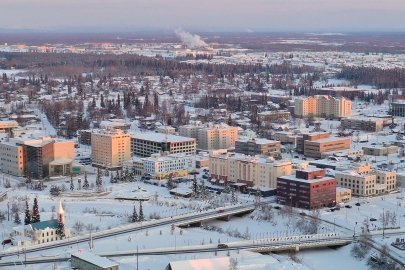 Learn how a utility in Fairbanks, Alaska, and a national lab used tools to simulate the impact of clean energy technologies on the city’s power system.
Learn how a utility in Fairbanks, Alaska, and a national lab used tools to simulate the impact of clean energy technologies on the city’s power system. -
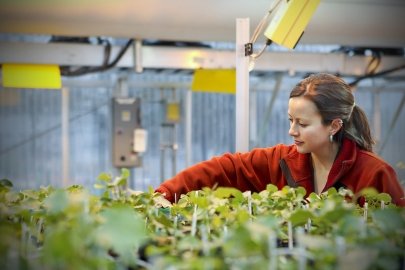 When you walk up and down the aisles of your local grocery store, it’s easy to focus on your list and not the water, energy, and complex logistics that go in to producing, packaging, and transporting everything in front of you.
When you walk up and down the aisles of your local grocery store, it’s easy to focus on your list and not the water, energy, and complex logistics that go in to producing, packaging, and transporting everything in front of you. -
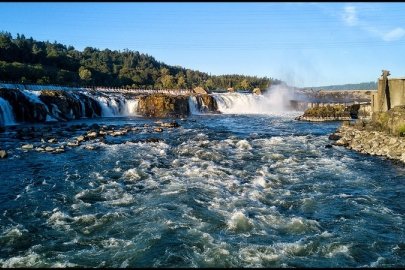 Water is the earth’s greatest natural resource, yet 2 billion people globally lack reliable access to clean water.
Water is the earth’s greatest natural resource, yet 2 billion people globally lack reliable access to clean water. -
Researchers and industry partners are making significant strides to improve energy efficiency and reduce the carbon footprint for chemical manufacturing of essential products, like ethylene. Ethylene is a chemical
Get the latest Industrious article and more industrial efficiency and decarbonization news.

